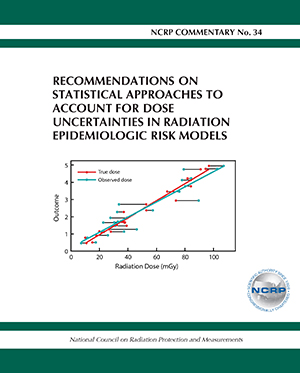News Archive
 The National Council on Radiation Protection and Measurements (NCRP) is proud to announce the publication of NCRP Commentary No. 34, Recommendations on Statistical Approaches to Account for Dose Uncertainties in Radiation Epidemiologic Risk Models.
The National Council on Radiation Protection and Measurements (NCRP) is proud to announce the publication of NCRP Commentary No. 34, Recommendations on Statistical Approaches to Account for Dose Uncertainties in Radiation Epidemiologic Risk Models.
Accurate exposure estimation in radiation epidemiologic studies is essential for reliable health risk assessment. NCRP Commentary No. 34 evaluates multiple, commonly used, statistical approaches used to account for uncertainties in dosimetry estimates and reviews the application of various uncertainty estimation techniques.
This commentary reviews the strengths and weaknesses of eight different statistical methods for characterizing uncertainty prominent in the current literature:
- Simulation extrapolation.
- Regression calibration.
- Likelihood-based methods.
- Markov chain Monte Carlo.
- Two-dimensional Monte Carlo with Bayesian model averaging.
- Frequentist model averaging.
- Corrected information matrix.
- Moment reconstruction and moment-adjusted imputation.
Uncertainties in dose are ubiquitous in radiation epidemiology studies, and failure to adjust for dose uncertainties in statistical analyses can result in incorrect estimation and inference regarding radiation health effects. Each analysis method to adjust for dosimetric uncertainty has advantages and disadvantages that need to be considered in each individual application.
Throughout the commentary, examples from large and well-characterized epidemiologic cohorts are provided to demonstrate applications of the statistical concepts presented; they are not intended to be exhaustive. Furthermore, while most of the examples pertain to ionizing radiation, the statistical methods reviewed are applicable to both ionizing and nonionizing radiation. The commentary also includes recommended methods to account for dosimetric uncertainty.




